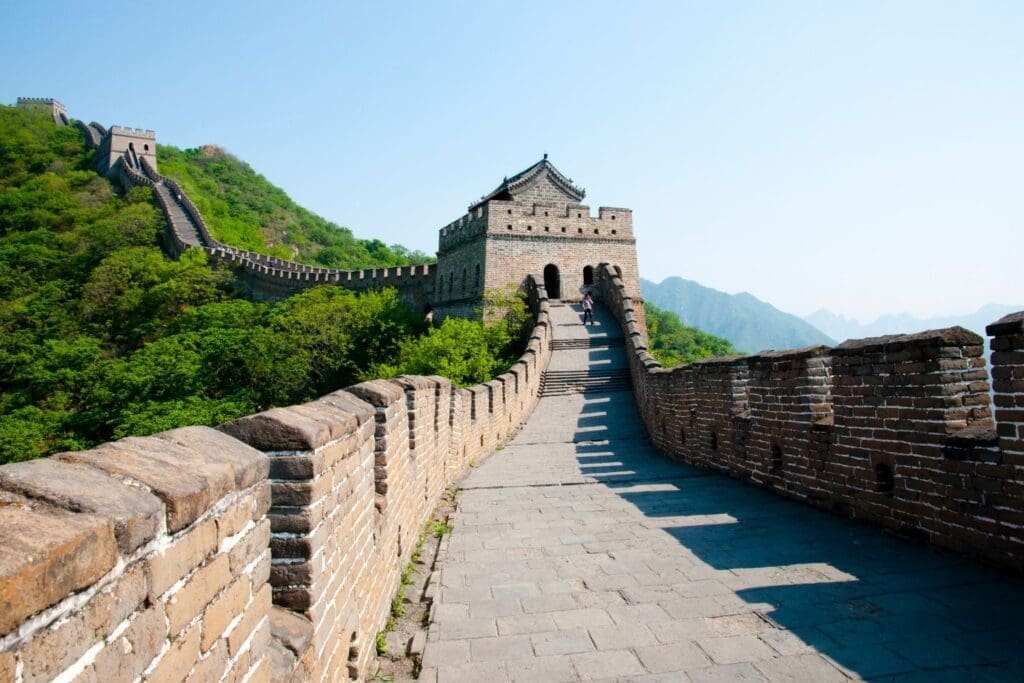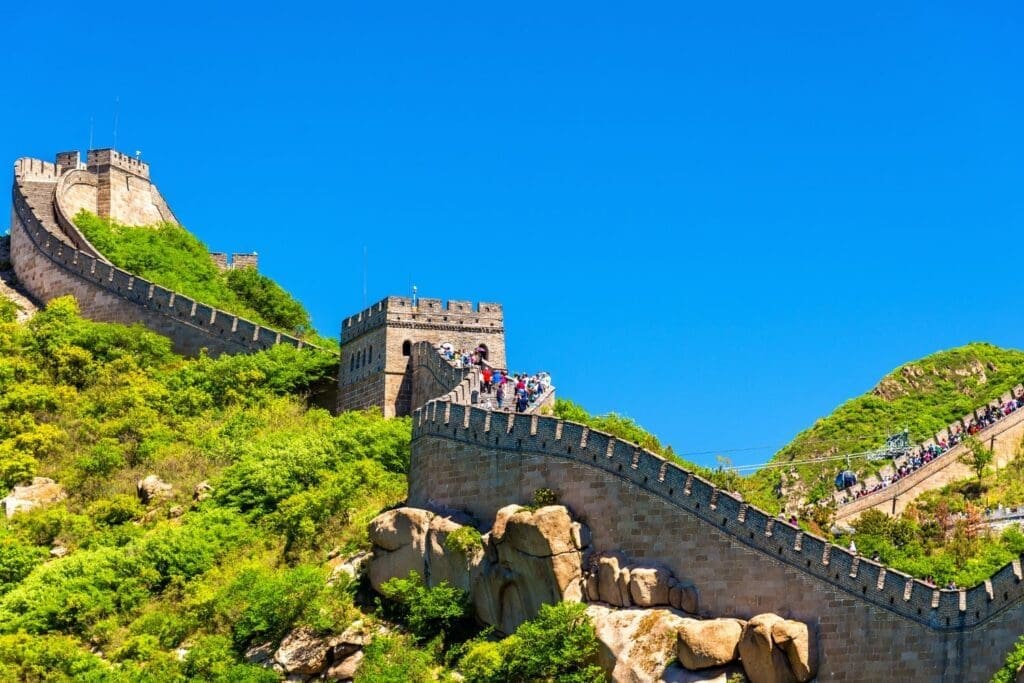12 Fascinating Facts About the Great Wall of China You Should Know
The Great Wall of China, a marvel of engineering, stretches over vast landscapes and tells tales of history, resilience, and human endeavor. Here are 12 interesting facts about this magnificent structure that everyone should know.
1. Astounding Length
The Great Wall’s immense length is staggering, stretching over 13,170 miles. To put this in perspective, it’s longer than the entire length of Africa’s Nile River, the longest river in the world. This makes the Great Wall not just a marvel of engineering but also one of the most ambitious construction projects ever undertaken by humanity. The effort required to build such a structure over mountains, deserts, and plains is almost unimaginable today, highlighting the advanced capabilities of ancient Chinese civilization.

2. A Work of Many Dynasties
The construction of the Great Wall wasn’t the project of a single ruler or even a single dynasty. It was built over several centuries, with the first parts erected in the 7th century BC. Over time, various dynasties added to it, especially the Ming dynasty, which was responsible for a large portion of what we see today. Each segment tells a story of the era it was built in, reflecting the changing needs, threats, and technological advancements of the time.
3. A Complex Network
Contrary to the common image of a single, unbroken wall, the Great Wall is actually a network of walls, trenches, and natural defensive barriers like rivers and mountains. Some sections run parallel to each other while others branch off in different directions. This complexity added layers of defense against invasions, demonstrating the strategic depth of ancient Chinese military architects.
4. Diverse Materials
The materials used to construct the Great Wall varied greatly depending on the resources available in each region. In the rugged north, builders used stone blocks and bricks, while in the west, where materials were scarce, they utilized rammed earth. This adaptability not only shows the ingenuity of its builders but also the diverse geographic landscapes the Wall traverses.

5. Defensive Fortress
The primary purpose of the Great Wall was to protect Chinese states and empires from the nomadic tribes of the north. It served as a physical barrier that controlled migration and trade routes. The wall was equipped with watchtowers for surveillance and beacon towers for communication, forming an early warning system against invasions. This elaborate defense mechanism underscores the strategic importance of the Wall in the survival and prosperity of Chinese civilizations.
6. Watchtowers and Signaling
The thousands of watchtowers along the Great Wall played a crucial role in its defense mechanism. Guards stationed in these towers could spot enemy movements from afar and communicate with other towers and the military using smoke signals during the day and fire at night. This ancient communication system was highly effective in transmitting messages over long distances quickly, showcasing an advanced understanding of military strategy and technology.
7. A Global Marvel
Recognized as one of the New Seven Wonders of the World, the Great Wall symbolizes not only architectural and engineering prowess but also the human spirit’s resilience. Its inclusion in this prestigious list reaffirms its global significance and the universal fascination it continues to inspire. The Wall is a testament to what humanity can achieve with collective effort and vision.
8. The Human Cost
The construction of the Great Wall was an enormous undertaking that required the labor of millions, including soldiers, peasants, and prisoners. The harsh conditions and the sheer physical demand of the work led to the loss of many lives. This somber aspect of the Wall’s history reminds us of the human cost behind ancient world wonders and the sacrifices made in their creation.
9. Debunking a Myth of the Great Wall
The myth that the Great Wall is visible from space has been widely debunked. Astronauts confirm that it is not visible to the naked eye from low Earth orbit, and certainly not from the moon. This misconception, however, does little to diminish the Wall’s grandeur and the awe it inspires in those who see it up close or learn of its history.
10. A Tourist Icon
Today, the Great Wall attracts millions of visitors from around the globe, drawn by its historical significance and the stunning vistas it offers. The sections near Beijing, such as Badaling and Mutianyu, are especially popular. This tourism not only contributes to China’s economy but also helps in the preservation efforts of this ancient structure.

11. Preservation Efforts
The Wall faces threats from natural erosion and human activities. In response, the Chinese government and international organizations have undertaken significant efforts to preserve and restore this UNESCO World Heritage site. These initiatives ensure that the Wall’s legacy will endure for future generations to appreciate and learn from.
12. Symbol of Chinese Endurance
The Great Wall transcends its original defensive purpose to become a symbol of China’s cultural and historical identity.








